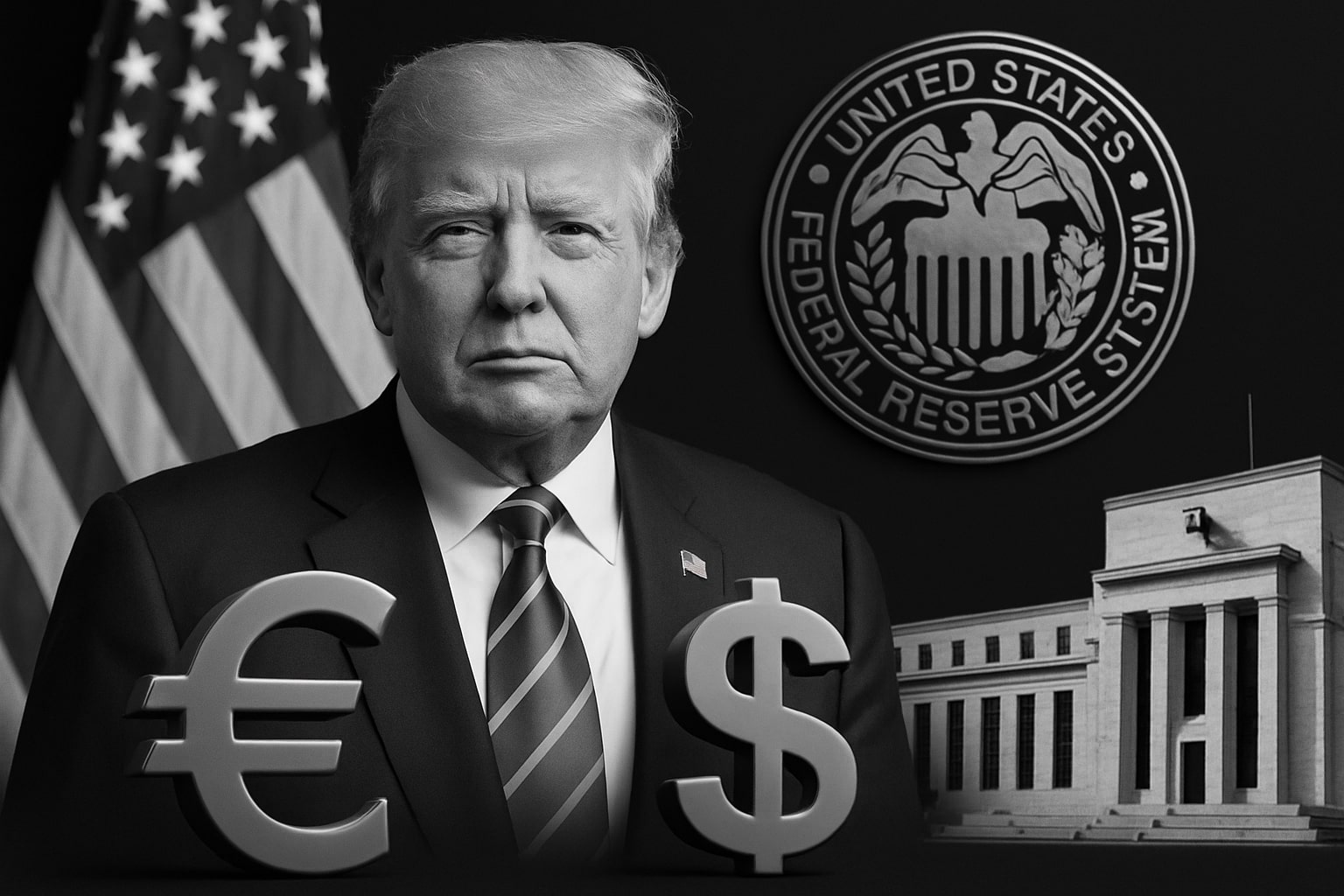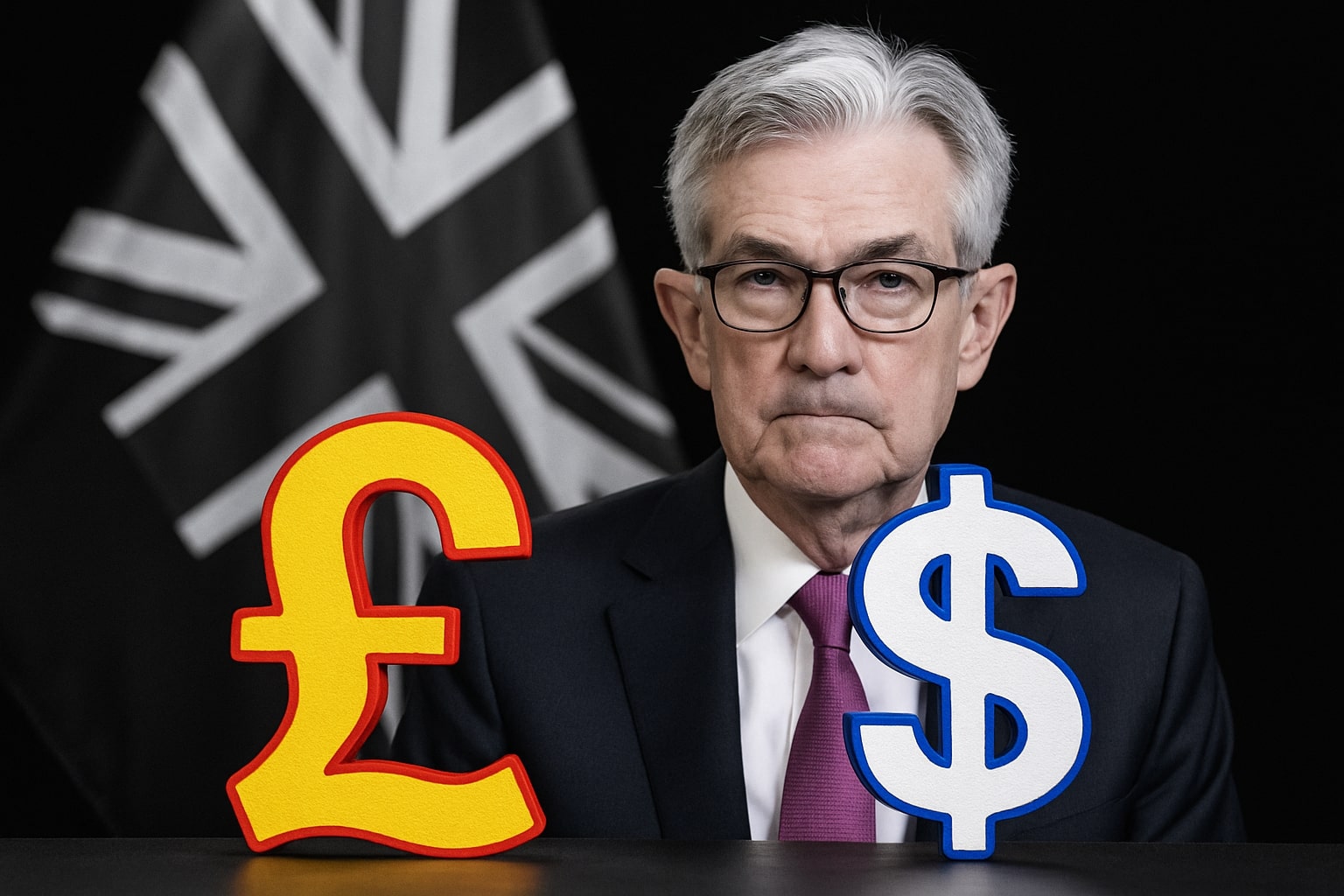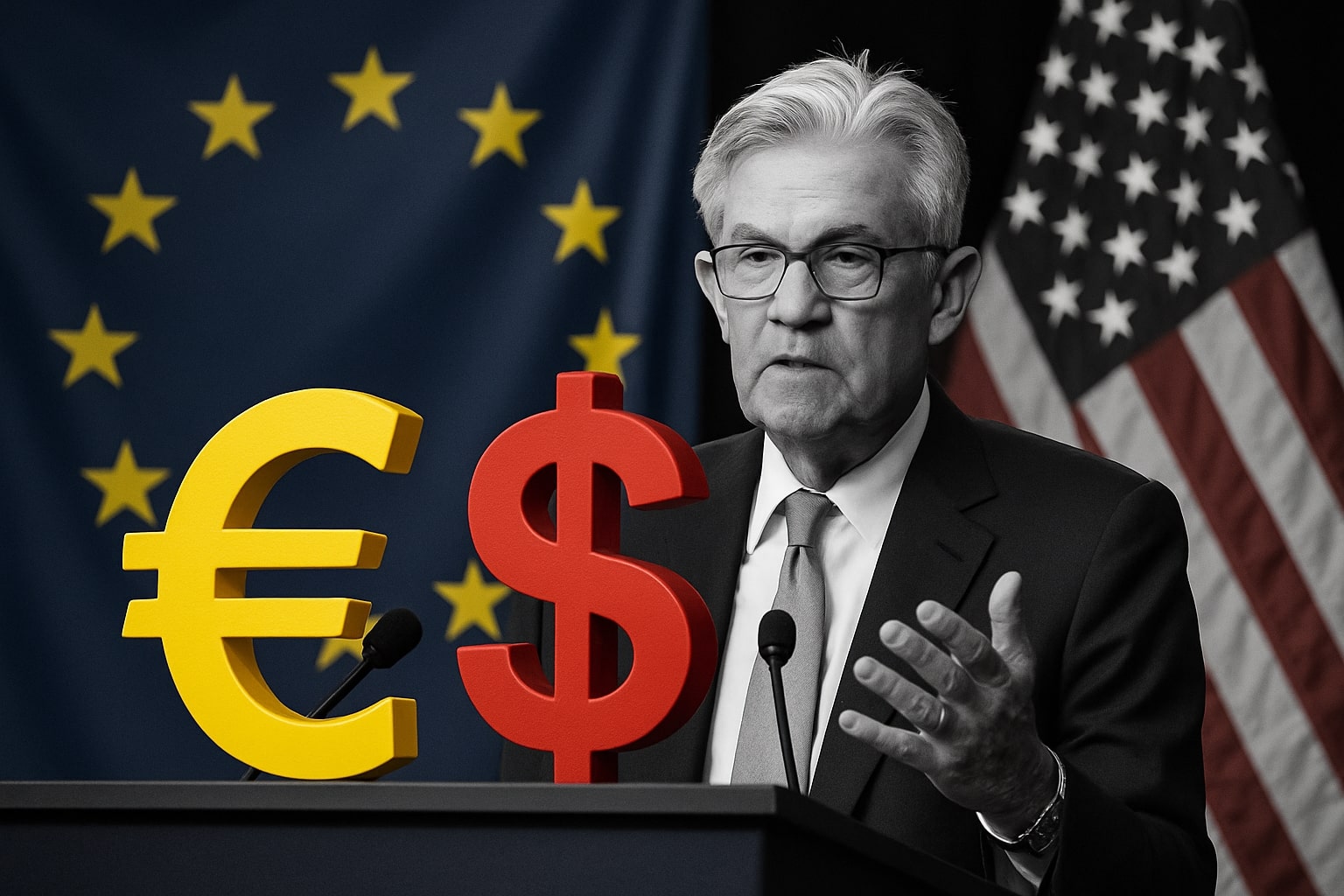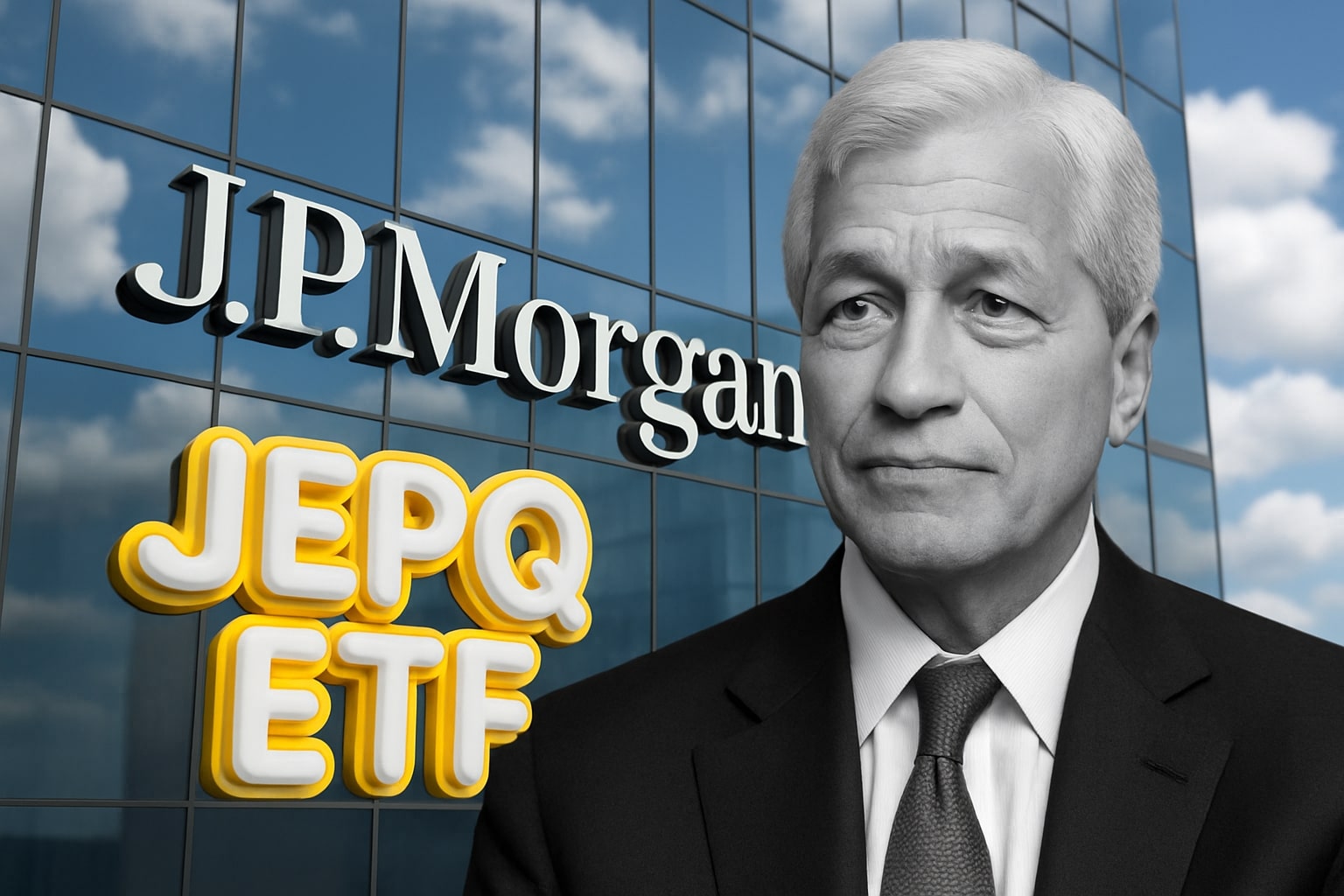
EUR/USD Price Forecast - Euro to Dollar Steadies Near 1.1738 as Fed Division and U.S. Shutdown Delay Key Data, Leaving Traders Caught Between Dovish Bets and Hawkish Warnings
The euro holds firm above 1.17 as the U.S. shutdown halts payroll data and conflicting Fed commentary—Logan warning on sticky inflation, Miran arguing for cuts—fuels choppy trade. With ISM Services PMI at 50.0 and S&P Global at 54.2, markets price a 96% probability of a 25-bps cut at the Oct. 29 FOMC. Traders eye resistance at 1.1778 and 1.1800, with bulls targeting 1.1830 if the dollar continues to weaken | That's TradingNEWS
EUR/USD (Euro–U.S. Dollar) Stabilizes Above 1.17 as Fed Division, U.S. Shutdown, and Weak Data Fuel Cautious Optimism
The EUR/USD pair held firm late Friday near 1.1738, marking a 0.28% daily gain, as traders weighed conflicting signals from the Federal Reserve against a backdrop of political gridlock in Washington. With the U.S. government shutdown entering its third day and major releases such as Nonfarm Payrolls postponed, liquidity in the FX market remained thin. The euro’s stability reflected both temporary dollar weakness and cautious positioning ahead of the next Federal Open Market Committee (FOMC) meeting on October 29, where markets are pricing in a 96% chance of a 25-basis-point rate cut, according to Prime Market Terminal data. The absence of fresh U.S. economic figures has amplified sensitivity to Fed rhetoric, with policymakers showing clear division on the path forward for monetary easing.
Fed Rhetoric Exposes Deep Policy Divide
The week’s trading was dominated by contradictory remarks from key Fed officials. Dallas Fed President Lorie Logan warned that “non-housing services inflation remains elevated,” expressing concern that tariff effects on imported goods could prolong inflationary pressures. Her tone contrasted sharply with Fed Governor Stephen Miran, who argued that “policy has become too restrictive” and that the central bank has “ample room to cut rates.” Meanwhile, Vice Chair Philip Jefferson attempted to balance the narrative, saying the absence of jobs data was “not ideal” but that the Fed had “sufficient information” to guide its decisions. This rhetorical tug-of-war added to uncertainty over the U.S. dollar’s short-term trajectory, as investors debated whether the Fed’s forward guidance would lean dovish enough to justify further euro strength.
Macroeconomic Data Show Loss of U.S. Momentum
Economic indicators reinforced the narrative of a softening U.S. economy. The ISM Services PMI for September dropped sharply from 52.0 to 50.0, exactly at the neutral expansion threshold, missing consensus expectations of 51.7. Respondents described business conditions as “moderate or weak,” while the employment component barely improved to 47.2 from 46.5, signaling persistent hiring reluctance. In contrast, the S&P Global Services PMI showed resilience at 54.2, only slightly below August’s 54.5, suggesting that parts of the services sector are still expanding despite softer domestic demand. Together, these mixed readings depict an economy losing steam but not yet contracting — a backdrop that strengthens the case for the Fed to deliver a measured, rather than aggressive, easing cycle.
Market Repricing Accelerates as Yields Fall
Bond markets reflected growing conviction in imminent policy easing. The 2-year Treasury yield eased toward 4.12%, while the 10-year slipped below 4.00% for the first time since June. Swap markets now price roughly 50 basis points of total cuts by year-end, up from 30 basis points two weeks ago. This repricing has pressured the U.S. Dollar Index (DXY), which fell to 97.72, hovering just above its three-month low of 97.46. The euro, benefiting from these shifts, gained for a fifth consecutive day, underscoring a clear sentiment rotation from defensive dollar holdings to selective euro buying. Still, European traders remain cautious given the bloc’s uneven growth recovery and persistent inflation pressures.
Technical Structure: 1.1730 Holds as Key Inflection Zone
From a technical perspective, EUR/USD continues to consolidate within a narrow range between 1.1700 and 1.1780. The pair has respected the 1.1730 pivot — now acting as a strong support level after being reclaimed earlier this week. As long as this area holds, bulls could attempt to retest 1.1778, followed by the 1.1800 psychological handle. A successful breakout above those levels could expose the July 1 high at 1.1830, and ultimately the 2025 yearly peak at 1.1918. On the downside, a move below 1.1700 would invite short-term selling pressure toward 1.1650 and the 100-day simple moving average near 1.1605, with deeper losses likely only if the Fed surprises with a more hawkish tone later in October. The short-term structure remains mildly bullish but vulnerable to sudden dollar reversals driven by political or macro shocks.
Eurozone Context: ECB’s Caution Underpins Modest Support
The European Central Bank (ECB) remains cautious amid sluggish euro-area growth and uneven inflation dynamics. Christine Lagarde’s recent remarks reiterated that “the disinflation process is proceeding,” though not fast enough to declare victory. Eurozone headline inflation eased to 2.6% in September, while core inflation remains sticky at 2.9%, keeping rate-cut timing uncertain. The ECB’s 50-day simple moving average (SMA) for the euro, currently at 1.1283, continues to slope positively, showing that the medium-term trend is still constructive. However, traders remain sensitive to any downside surprises in upcoming German or French manufacturing data, which could erode momentum. For now, relative monetary policy divergence — with the Fed moving faster toward easing — gives the euro a modest advantage.
Read More
-
JEPQ ETF Holds $58.82 as Fund Flows Cool and Nasdaq Valuations Stretch
06.12.2025 · TradingNEWS ArchiveStocks
-
XRP ETFs Cross $1 Billion AUM as XRPI and XRPR Lead Institutional Wave
06.12.2025 · TradingNEWS ArchiveCrypto
-
Natural Gas Price Breakout: NG=F Soars to $5.50 on Cold U.S. Weather & LNG Export Boom
06.12.2025 · TradingNEWS ArchiveCommodities
-
USD/JPY Price Forecast - Dollar to yen Slides to 155.60, BOJ Hike Reprice Global Currency Markets
06.12.2025 · TradingNEWS ArchiveForex
Shutdown Impact and Fiscal Risks in the U.S.
The ongoing U.S. government shutdown adds another layer of uncertainty. With federal data releases suspended, including critical employment and inflation reports, markets are effectively operating without official economic visibility. This vacuum increases volatility potential as traders react to secondary indicators and Fed speeches instead. Historical data show that prolonged shutdowns often weaken the dollar due to reduced investor confidence and slower economic activity. The last two major shutdowns in 2018 and 2023 both coincided with EUR/USD gains of 1.7% and 2.3%, respectively, over similar two-week spans. Should the current standoff persist beyond October 10, speculative flows may drive the euro toward 1.1850 territory even before the Fed’s next policy announcement.
Market Psychology and Positioning
CFTC data show that speculative long positions in the euro have risen 18% week-over-week, reflecting growing confidence that the pair’s downside is limited. The relative strength index (RSI) on the daily chart holds near 58, staying comfortably below overbought territory. Meanwhile, implied volatility for one-month EUR/USD options has dropped to 6.3%, its lowest since May, suggesting complacency but also reduced demand for downside hedges. In short, traders are positioning for stability rather than acceleration, awaiting either a fundamental catalyst or resolution of the political gridlock that has frozen the world’s largest economy’s data pipeline.
Forward Outlook and Bias
The near-term outlook for EUR/USD hinges on two converging forces: the pace of Fed rate cuts and the persistence of U.S. fiscal dysfunction. A dovish shift in Fed communication or progress in budget negotiations could weaken the dollar further, enabling a push toward 1.1830–1.1918 resistance. Conversely, if inflation surprises higher or if the Fed reiterates hawkish restraint, the euro may retreat back toward 1.1650 support. Given the balance of probabilities — with U.S. yields declining, inflation cooling, and the dollar losing defensive momentum — the broader trajectory leans modestly bullish.
Verdict: BUY (Bullish Bias)
With EUR/USD holding above 1.1730 and Fed policy expectations turning softer, momentum favors further euro appreciation. Near-term dips remain buying opportunities toward 1.1830, while sustained closes above 1.1800 could open the path toward 1.19. Downside risk remains contained as long as 1.1700 holds, making the pair tactically bullish for traders anticipating continued dollar softness amid Washington’s political paralysis and the Fed’s dovish realignment.



















